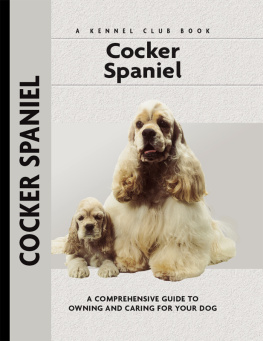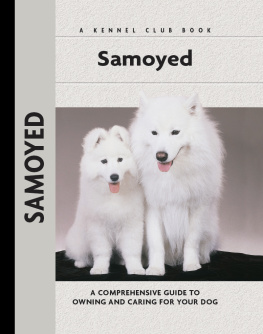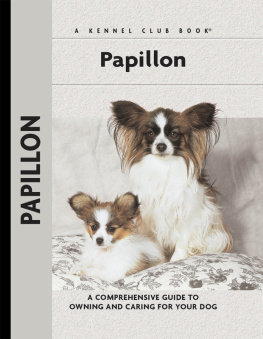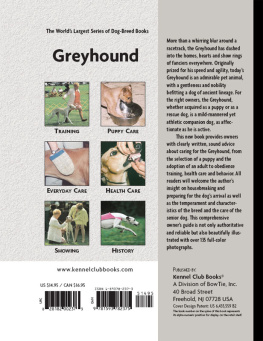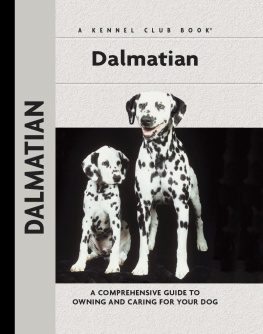Physical Characteristics of the Brittany
(from the American Kennel Club breed standard)
Skull: Medium length, rounded, very slightly wedge-shaped, but evenly made. Width, not quite as wide as the length. Well defined, but gently sloping stop.
Eyes: Well set in head. Well protected from briars by a heavy, expressive eyebrow.
Ears: Set high, above the level of the eyes. Short and triangular, rather than pendulous, reaching about half the length of the muzzle. Should lie flat and close to the head, with dense, but relatively short hair, and with little fringe.

Nose: Nostrils well open to permit deep breathing of air and adequate scenting. Tight nostrils should be penalized.
Neck: Medium length. Well set into sloping shoulders.
Muzzle: Medium length, about two-thirds the length of the skull, measuring the muzzle from the tip to the stop, and the skull from the occiput to the stop. Muzzle should taper gradually in both horizontal and vertical dimensions as it approaches the nostrils.
Color: fawn, tan, shades of brown or deep pink.
Chest: Deep, reaching the level of the elbow. Ribs well sprung. Adequate heart room provided by depth as well as width.
Shoulders: Shoulder blades should not protrude too much, not too wide apart, with perhaps two thumbs width between. Sloping and muscular. Blade and upper arm should form nearly a 90-degree angle. At the shoulders, the Brittany is slightly higher than at the rump.
Front Legs: Viewed from the front, perpendicular, but not set too wide. Elbows and feet turning neither in nor out. Pasterns slightly sloped. Leg bones clean, graceful, but not too fine. Height at elbows should approximately equal distance from elbow to withers.
Topline: Slight slope from the highest point of the shoulders to the root of the tail.
Back: Short and straight. Slight drop from the hips to the root of the tail.
Tail: Tailless to approximately four inches, natural or docked. Set on high, actually an extension of the spine at about the same level.
Hindquarters: Broad strong and muscular, with powerful thighs and well bent stifles, giving the angulation necessary for powerful drive. Stifles well bent. Thighs well feathered but not profusely, halfway to the hock. Hocks should be moderately short, perpendicular when viewed from the side.
Coat: Dense, flat or wavy, never curly. The front and hind legs should have some feathering, but too little is definitely preferable to too much.
Skin: Fine and fairly loose.
Feet: Should be strong, proportionately smaller than the spaniels, with close fitting, well arched toes and thick pads. An ideal foot is halfway between the hare and the cat foot.
Color: Orange and white or liver and white in either clear or roan patterns. Some ticking is desirable. The orange or liver is found in the standard parti-color or piebald patterns.
Size: Height: 17.5 to 20.5 inches, measured from the ground to the highest point of the shoulders.
Weight: Should weigh between 30 and 40 pounds.
Contents

Born from a need for a hunting companion that could help locate, rather than kill, game, the Brittany originated from spaniel/setter crosses in the Bretagne region of France. Learn about the breeds development and follow its establishment in Europe, acceptance in the UK, instant popularity in the US and rise to world-wide recognition.

A working dog at heart, the Brittany is a devoted and intelligent companion with energy to spare. Gregarious, loyal, good with children and wanting nothing more than to be a true member of the family, the Brittany makes a wonderful pet for those who can provide adequate activity and much affection. Learn about the breeds personality and physical characteristics, as well as owner suitability and health concerns in the breed.

Learn the requirements of a well-bred Brittany by studying the description of the breed as set forth in the American Kennel Clubs breed standard. Both show dogs and pets must possess key characteristics as outlined in the breed standard.

Be advised about choosing a reputable breeder and selecting a healthy, typical puppy. Understand the responsibilities of ownership, including home preparation, acclimatization, the vet and prevention of common puppy problems.

Enter into a sensible discussion of dietary and feeding considerations, exercise, grooming, traveling and identification of your dog. This chapter discusses Brittany care for all stages of development.
Born from a need for a hunting companion that could help locate, rather than kill, game, the Brittany originated from spaniel/setter crosses in the Bretagne region of France. Learn about the breeds development and follow its establishment in Europe, acceptance in the UK, instant popularity in the US and rise to world-wide recognition.

By Charlotte Schwartz
Be informed about the importance of training your Brittany from the basics of house-training and understanding the development of a young dog to executing obedience commands (sit, stay, down, etc.).

Discover how to select a qualified veterinarian and care for your dog at all stages of life. Topics include vaccination scheduling, skin problems, dealing with external and internal parasites and the medical and behavioral conditions common to the breed.

Recognize the signs of an aging dog, both behavioral and medical; implement a senior-care program with your veterinarian and become comfortable with making the final decisions and arrangements for your senior Brittany.

Experience the dog show world, including different types of shows and the making of a champion. Go beyond the conformation ring to field, obedience and agility trials.
KENNEL CLUB BOOKS BRITTANY
ISBN 13: 978-1-59378-285-6
eISBN 13: 978-1-59378-892-6
Copyright 1999 Kennel Club Books An Imprint of I-5 Press A Division of I-5 Publishing, LLC
3 Burroughs, Irvine, CA 92618 USA
Cover Design Patented: US 6,435,559 B2 Printed in South Korea
All rights reserved. No part of this book may be reproduced in any form, by photostat, scanner, microfilm, xerography or any other means, or incorporated into any information retrieval system, electronic or mechanical, without the written permission of the copyright owner.



